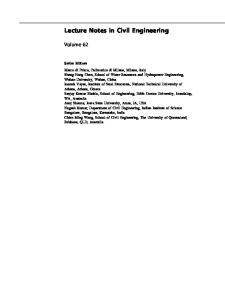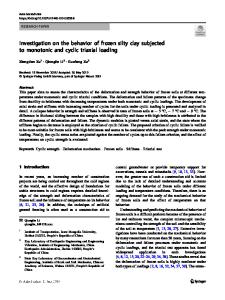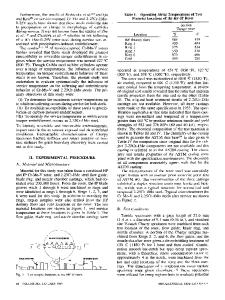Modeling Strength Degradation of Fiber-Reinforced Ceramic-Matrix Composites Subjected to Cyclic Loading at Elevated Temp
- PDF / 2,759,197 Bytes
- 19 Pages / 439.37 x 666.142 pts Page_size
- 58 Downloads / 368 Views
Modeling Strength Degradation of Fiber-Reinforced Ceramic-Matrix Composites Subjected to Cyclic Loading at Elevated Temperatures in Oxidative Environments Li Longbiao 1
Received: 22 March 2017 / Accepted: 20 April 2017 # Springer Science+Business Media Dordrecht 2017
Abstract In this paper, the strength degradation of non-oxide and oxide/oxide fiber-reinforced ceramic-matrix composites (CMCs) subjected to cyclic loading at elevated temperatures in oxidative environments has been investigated. Considering damage mechanisms of matrix cracking, interface debonding, interface wear, interface oxidation and fibers fracture, the composite residual strength model has been established by combining the micro stress field of the damaged composites, the damage models, and the fracture criterion. The relationships between the composite residual strength, fatigue peak stress, interface debonding, fibers failure and cycle number have been established. The effects of peak stress level, initial and steadystate interface shear stress, fiber Weibull modulus and fiber strength, and testing temperature on the degradation of composite strength and fibers failure have been investigated. The evolution of residual strength versus cycle number curves of non-oxide and oxide/oxide CMCs under cyclic loading at elevated temperatures in oxidative environments have been predicted. Keywords Ceramic-matrix composites (CMCs) . Airworthiness . Strength . Oxidation . Matrix cracking . Interface debonding . Fibers failure
1 Introduction Ceramic-matrix composites (CMCs) possess high strength-to-weight ratio at elevated temperatures, and are being designed in the hot section components of commercial aero engine, i.e., CFM 56 − 5B and LEAP turbofan engine (CFM International, Cincinnati, OH USA) [1]. The Civil Aviation Administration of China (CAAC) issues and enforces regulations and minimum standards covering the safe manufacture, operation and maintenance of civil aircraft. As new
* Li Longbiao [email protected]
1
College of Civil Aviation, Nanjing University of Aeronautics and Astronautics, No.29 Yudao St, Nanjing 210016, People’s Republic of China
Appl Compos Mater
materials, these ceramic composite components will have to meet the certification regulations of the CAAC for airworthiness. The CMC producer and user will have to show the CAAC the component is well designed for operation, safety and durability, and the failure risk is within the accepted level. However, during cyclic loading at elevated temperatures, the composite strength degrade with flight hours or cycles, which increases the failure risk level. Under cyclic fatigue loading, the material performance of CMCs degrade with applied cycles due to damage mechanisms of matrix cracking, interface debonding, interface wear and fibers fracture. Lee et al. [2] investigated the tension − tension fatigue behavior of 2D SiC/[Si-N-C] composite at room and elevated temperatures. At room temperature, the fatigue limit was about 75% tensile strength; and at 1000 °C in air, the fatigue run-out
Data Loading...










